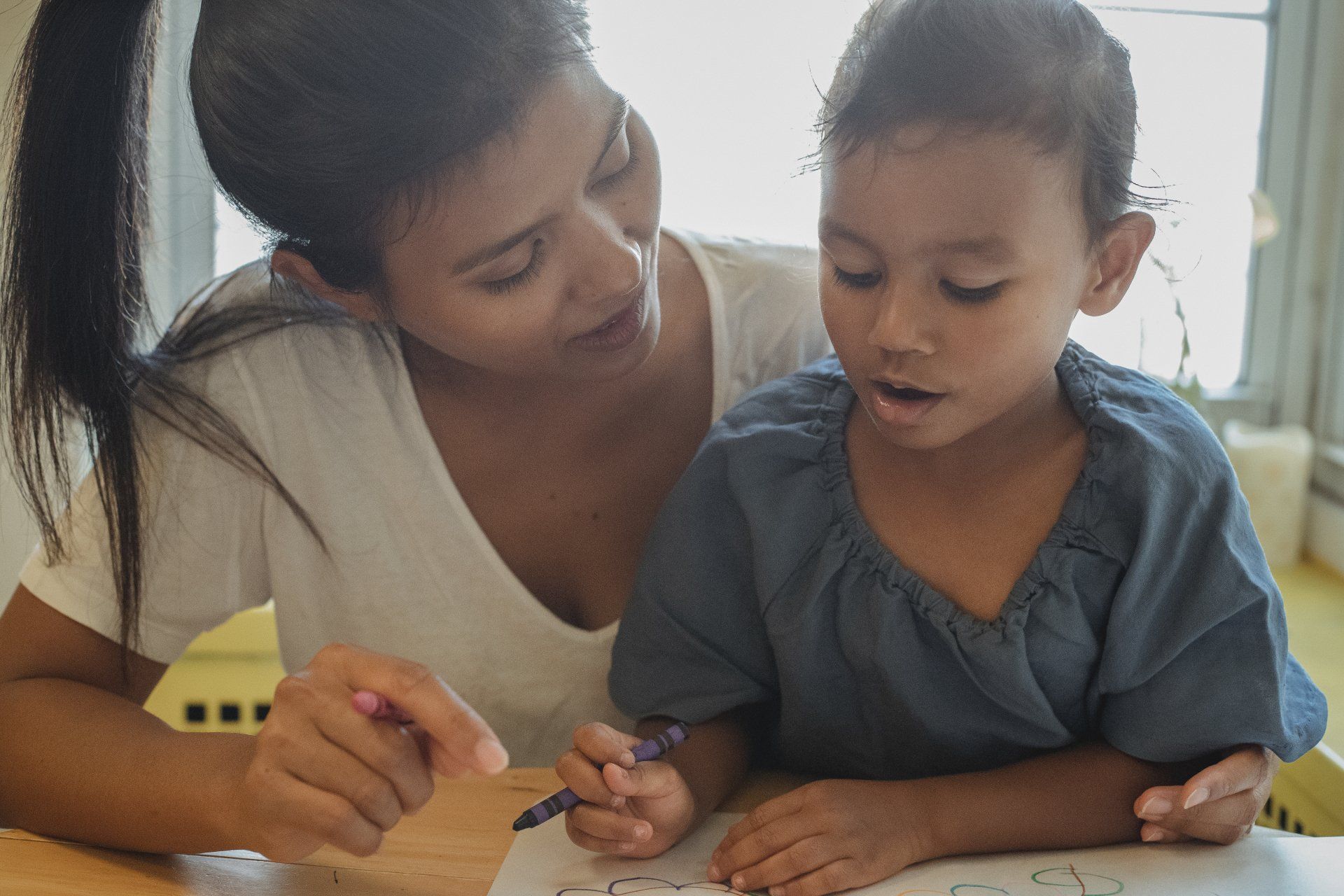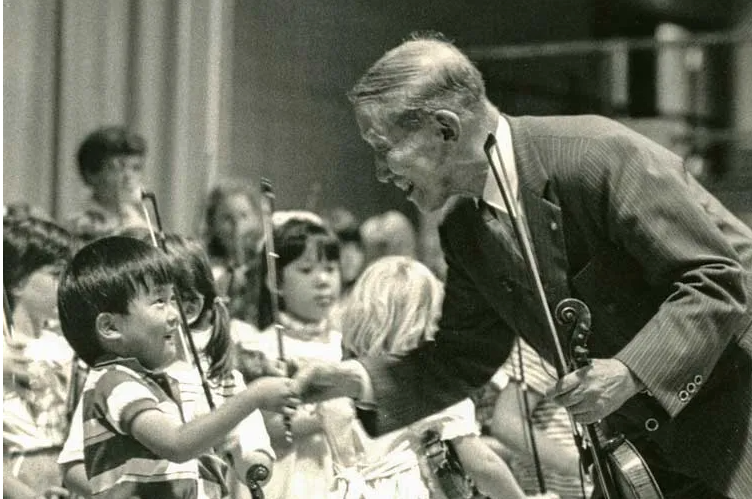Suzuki and the Talent Education Method
Suzuki and the Talent Education Method
Shinichi Suzuki's Legacy
Shinichi Suzuki was a violinist, educator, philosopher, and humanitarian. Over the past fifty years his work has had a profound influence on music education in his own country and throughout the world.
Suzuki based his approach on the belief that, "Musical ability is not inborn talent but an ability which can be developed. Any child who is properly trained can develop musical ability, just as all children develop the ability to speak their mother tongue. The potential of every child is unlimited." Suzuki's beliefs and the method he developed have now reached thousands of teachers, children and families in many nations.
Origin of the Talent Education Method
Born in 1898, Shinichi Suzuki studied the violin in Japan for some years before going to Germany in the 1920's. After further study there, he returned to Japan to play and teach. He taught university students, but became more and more interested in the education of young children.
Suzuki realized the implications of the obvious fact that children of all nationalities easily learn their native language. He began to develop a method for teaching violin modelled after that way in which children learn language and called it the Mother-Tongue Approach or Talent Education.
Development of the Method
Suzuki's work was interrupted by World War II, and after its end he was determined to bring the beauty of music to the bleak lives of his nation's children. He began teaching at a small school in Matsumoto, working to develop a sequential repertoire that would present musical and technical points in a logical manner. Within a few years Suzuki's students were amazing listeners with their abilities.
The Talent Education movement grew as other teachers studied with Suzuki and began to teach throughout Japan. The program expanded as teachers of different instruments became interested in Suzuki's approach, and materials were developed for cello, piano and flute. Over the years, thousands of Japanese children have received Suzuki training at the Talent Education Institute in Matsumoto and the branch schools in other cities.
Introductions to the U.S.
In 1958 a Japanese student at Oberlin College brought a film of Suzuki's young students performing in a national concert. American string teachers became intrigued with the results of Suzuki's method and began to visit Japan to learn more about his work.
Interest intensified in 1964 when Suzuki brought a group of students to tour the U.S. and perform at a joint meeting of the American String Teachers Association and the Music Educators National Conference. The method began to flourish int he U.S. with visits fo American teachers to Japan, performances of Japanese tour groups, and the growth of hundreds of Suzuki program across the country.
The Suzuki Method Today
Dr. Suzuki did not develop his method in order to produce professional musicians but to help children fulfill their capabilities as human beings. As he said, "Teaching music is not my main purpose. I want to make good citizens, noble human beings. If a child hears fine music from the day of his birth, and learns to play it himself, he develops sensitivity, discipline and endurance. He gets a beautiful heart."
In the years since he began his work, Dr. Suzuki inspired thousands of parents and teachers in more than forty countries in Asia, Europe, Australia, Africa and the Americas to nurture loving human beings through the mother-tongue approach to music education. In the supportive environment fostered by the Suzuki method, children learn to enjoy music and develop confidence, self-discipline, concentration, and the determination to try difficult things -- qualities that are sorely needed in our time. As Pablo Casals remarked through his tears after hearing Suzuki children play, "Perhaps it is music that will save the world."
SPECIAL FEATURES
Suzuki realized the implications of the fact that children the world over learn to speak their native language with ease, and applied the basic principles of language acquisition to the learning of music. The ideas of parent responsibility, loving encouragement, listening, constant repetition, etc., are some of the special features of the Suzuki method.
Parent Involvement
When a child learns to talk, parents function very effectively as teachers. Parents also have an important role as "home teachers" as the child learns an instrument. In the beginning, one parent often learns to play before the child, so that s/he understands what the child is expected to do. The parent attends the child's lessons and the two practice daily at home.
Early Beginning
The early years are crucial for developing mental processes and muscle coordination in the young child. Children's aural capacities are also at their peak during the years of language acquisition, and this is an excellent time to establish muscial sensitivity.
Listening to music should begin at birth and formal training may begin at age three or four, though it is never too late to begin.
Listening
Children learn to speak in an environment filled with language. Parents can also make music part of the child's environment by attending concerts and playing recordings of the Suzuki repertoire and other music. This enables children to absorb the language of music just as they absorb the sounds of their mother tongue. With repeated listening to the pieces they will be learning, children become familiar with them and learn them easily.
Repetition
When children have learned a word, they continue to use it while adding new words to their vocabulary. Similarly, Suzuki students repeat the pieces they learn, gradually using the skills they have gained in new and more sophisticated ways as they add to their repertoire. Introduction of new technical skills and musical concepts in the context of familiar pieces makes their acquisition much easier.
Encouragement
As with language, the child's efforts to learn an instrument should be met with sincere praise and encouragement. Each child learns at his/her own rate, building on small steps so that each one can be mastered. This creates an environment of enjoyment for child, parent and teacher. A general atmosphere of generosity and cooperation is established as children are encouraged to support the efforts of other students.
Learning with Other Children
Music promotes healthy social interaction, and children are highly motivated by participating in group lessons and performances in addition to their own individual lessons. They enjoy observing other children at all levels -- aspiring to the level of more advanced students, sharing challenges with their peers, and appreciating the efforts of those following in their footsteps.
Graded Repertoire
Children do not practice exercises to learn to speak, but learn by using language for communication and self-expression. With the Suzuki method, students learn musical concepts and skills in the context of music rather than through dry technical exercises. The Suzuki repertoire for each instrument present a careful sequence of building blocks for technical and musical development. This standard repertoire provides strong motivation, as younger students want to play music they hear older students play.
Delayed Reading
Children are taught to read only after their ability to speak has been well established. In the same way, Suzuki students develop basic competence on their instruments before being taught to read music. This sequence of instruction enables both teacher and student to focus on the development of good posture, beautiful tone, accurate intonation, and musical phrasing.











